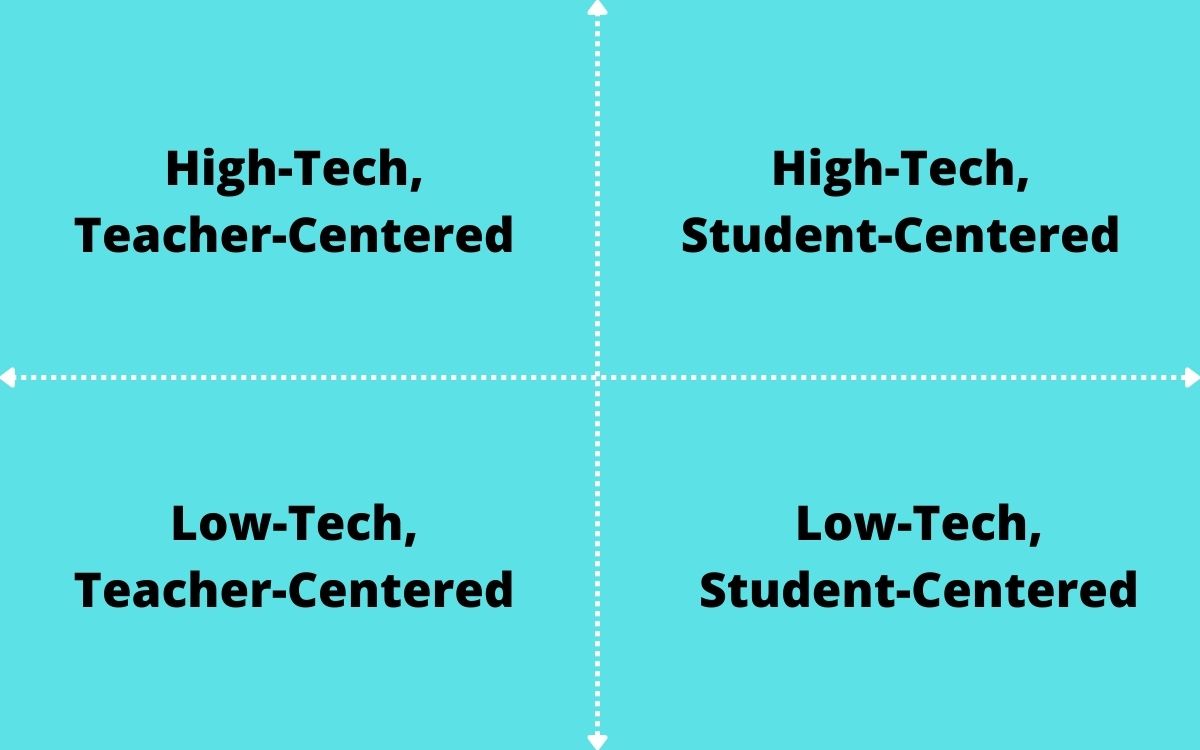In one of my favorite films ever, Auntie Mame, the title character’s nephew, Patrick, has fallen under Auntie Mame’s care upon the untimely death of his father. In one explosive scene, Patrick’s straightlaced “trustee” and educational overseer bursts into Auntie Mame’s home, outraged, and explains that he has pulled Patrick out of school because when he went to visit, he found the children, naked, playing “fish family.”
Patrick calmly explains that this is a game where the girls in class pretend to be ladyfish and lay the eggs, and then the boys come along behind and pretend to fertilize them. Imagine that! The scene certainly provides an illustration of a teaching method that most would find unconventional. However, there are an awful lot of teaching methods that fall on the spectrum somewhere between the traditional lecture and “fish family.” But really, what is the importance of teaching methods?
The importance of teaching methods is that they empower the teacher with flexibility and autonomy in the classroom. A teacher who possesses a hefty mental toolbox of teaching methods can change things up quickly, adapting to students’ needs as they arise.
Teaching methods have spanned history from Socrates and the Socratic Method that resulted in his death by poison in 399 BCE (the method is more successful than the trial was) all the way through impassioned conversations about how teaching methods can be innovated to best fit virtual classrooms in the wake of virtual schooling for students across the globe during the pandemic.
What Are Some Examples of Teaching Methods?

Part of the magic of teaching methods is the great number and variety that exist. A Google search will yield pages and pages of lists, explanations, applications, and scenarios. Some fan favorites are as follows, but please know these are only a small sampling of available options:
- Flipped learning — Students do the learning part (textbook reading, listening to lectures, etc… at home) and do projects and homework at school.
- Game-based learning — Teachers motivate students to learn through game-based elements.
- Personalized or differentiated instruction–Teachers approach each student based on that student’s personality, skillset, interests, and challenges.
- Inquiry-based learning — Teachers act as a guide as students pursue their own path to solve a problem or answer a question, and in some cases, the students are posing the questions they wish to answer. (To see this carried further, please look up Unlearning as a teaching method, most frequently used in homeschooling.)
What Is the Best Teaching Method?
There is no best teaching method, truly. As you’ll see in the next section, determining a teaching method has many variables: the teacher’s personality, the students’ personalities, modality/classroom environment, number of students in the class, age of the students in the class, and more.
However, because we are a culture of bests, worsts, top 10s, and more, the best teaching method can be measured on two planes after the fact: (a) by the level of excitement the students had in learning and (b) by how successfully the students were able to perform the learning outcome.
Which Teaching Method Should I Use?
Because there are so many teaching methods available, it’s reasonable that the choice on a given day may be difficult for a teacher to make. To determine the preferred method, the teacher must consider the variables listed in the section above. Those items can help teachers make two of the first decisions necessary to determine the teaching method.
For example, a teacher would need to understand the personalities of the students in class to choose a teacher-centered (formal authority lecture, direct instruction) or student-centered (small group instruction, Inquiry-based learning) method. The classroom environment also helps a teacher to know if a low-tech or high-tech approach is more appropriate (or even possible).
Once you’ve determined those two categories (see Figure 1), it becomes easier to choose a teaching method that fits into that quadrant.

A Funny Thing About College Professors and Teaching Methods…
Interestingly, most of the resources that you’ll find online about teaching methods are directed at K-12 teachers, though the creative professor can easily adapt many of them to the college classroom. The standard K-12 application makes sense because to earn a bachelor’s degree in a teacher education program, a student spends at least a year in the classroom setting learning teaching methodology supplemented by their own academic coursework.
Teachers earning a bachelor’s in another discipline must also complete an educator prep program that includes learning teaching methods. However, at the college level, no such formal, required training exists. University faculty must have at least a master’s degree in the discipline that they are teaching (most universities and even junior colleges require a PhD, however), but no classes on how to teach are built into degree programs.
Many universities do provide some sort of professional development that includes discussion of teaching methods, but this is not a standard practice. Moreover, as more than half of college classes are taught by part-time faculty at most colleges and universities, those faculty are often not on campus enough to be included in optional trainings. Use of varied teaching methods, as it follows, may be spotty and based on the individual or institution’s commitment to professional development in this area.
Teaching Methods 2.0: It’s a Brave New Online World

In this instance, faculty of higher education have a bit of a jump on most K-12 teachers in terms of online teaching methods. At this point, most colleges and universities have some sort of online modality that at least some, if not most, of the faculty are accustomed to using. Many K-12 teachers found themselves at a distinct disadvantage when districts made the sudden switch to virtual classrooms and found that while some teaching methods transition quite easily, many do not, and the lost instructional hours and student engagement may have repercussions we’ve not yet begun to see.
However, technological innovation and teaching methods had a whirlwind romance over the past few years as K-12 teachers looked to their higher ed partners for tips and learned to adapt them. While personalized or differentiated instruction became difficult, flipped learning often saved the day in an online educational platform. Game-based learning may or may not have translated well based on the students’ access to technology and engagement, but inquiry-based learning could be adapted in a manner that gave students a measure of autonomy.
But Is a Teaching Method Really Necessary?
People’s opinions will vary on whether it’s important to have a teaching method established for every moment of teaching. It’s likely to depend on the subject you’re teaching and the kinds of learning outcomes you’re teaching as well as the age and development of your students. However, knowing teaching methods and maybe even the psychological theories they’re based on is important. Classroom chemistry is a real thing, and a class’s mood can change on a dime.
If a lesson begins to fall flat, it’s worth the effort to have that mental toolbox of teaching methods at the ready. If students are flailing in confusion over a particularly difficult concept, it may be time to shift to a different strategy. You may not want to go so far as to pull “fish family” out of your back pocket, but good teachers will never regret having multiple teaching methods to fall back on.
Related Articles
- What is the Teacher-Centered Approach?
- What are the Advantages of the Teacher-Centered Approach?
- What Are the Advantages and Disadvantages of Student-Centered Learning?
- What Are the Advantages and Disadvantages of Online Learning?
- What are The Pros and Cons of Virtual Learning?




